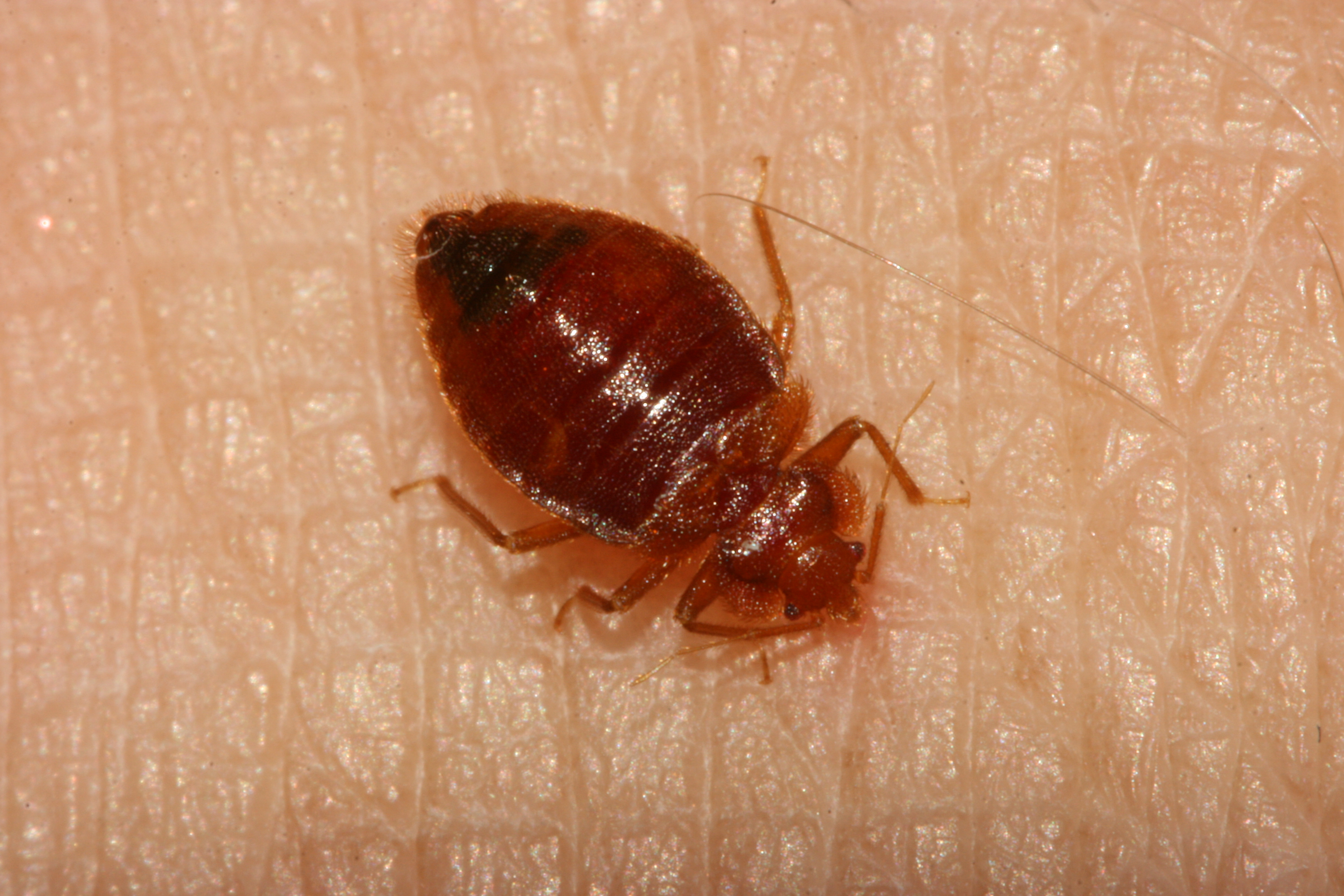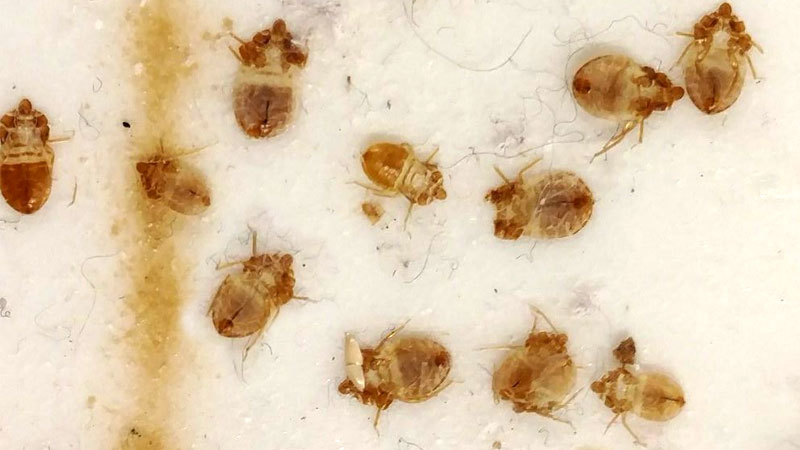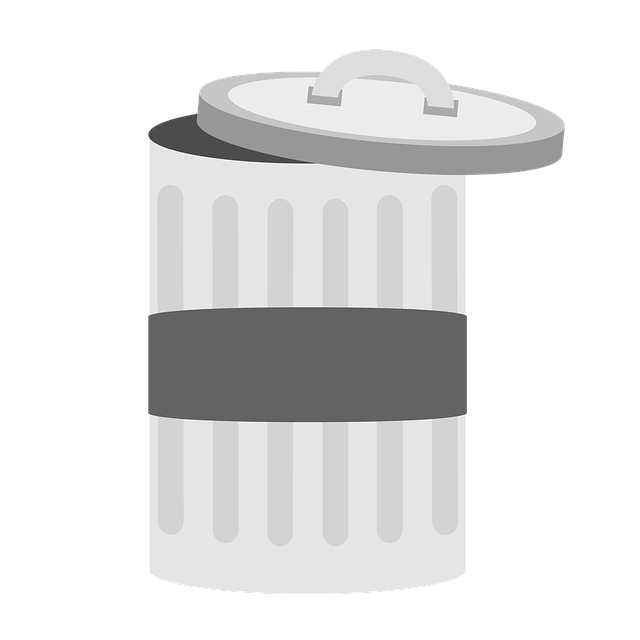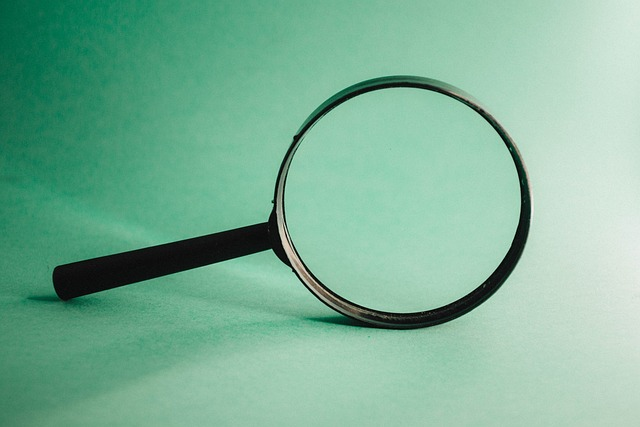Did you know that those tiny, reddish-brown shells you may find in your bed are not just random debris but actually the exoskeletons of bed bugs? Most people are unaware of these seemingly insignificant clues that could point to a larger problem lurking in their home. In this blog post, we’ll explore everything you need to know about bed bug casings, from their purpose to how to identify, locate, and handle them. By the end of this post, you’ll be equipped with the knowledge to tackle any potential bed bug infestation head-on.
Short Summary
- Bed bug casings are evidence of an infestation and can help identify the life stage of bed bugs.
- Regular inspection, safe disposal, cleaning & sanitizing affected areas as well as proactive measures like using covers and keeping a tidy home environment is essential to prevent future infestations.
- Professional help from a pest control company should be sought for comprehensive treatment options when DIY strategies fail or if the severity of the situation requires it.
Bed Bug Casings: An Overview
Bed bugs, including young bed bugs and the adult bed bugs, are notorious for their ability to infest our homes, causing discomfort and distress. These tiny, blood-sucking pests leave behind a trail of evidence, such as bed bug casings, as they grow and develop. It’s important to know what bed bugs prefer in order to prevent and control their infestations.
Bed bug casings, also known as bed bug shells, are the exoskeletons that these insects shed throughout their lifecycle. When you find these casings, it’s a sign that you may be dealing with a bed bug infestation.
The Purpose of Bed Bug Casings
Bed bugs, including adult bed bugs, shed their skin for a few reasons, primarily to facilitate growth and maturation, enabling their bodies to expand and acquire new characteristics. This shedding process also helps bed bugs rid themselves of parasites that might have hitched a ride on their exoskeletons.
Discovering a first or second instar bed bug casing is crucial, as it implies a high probability of the bed bug emerging from an existing infestation. Understanding the rate of bed bug molting is vital for detecting and treating an infestation, as it helps identify live bed bugs and their growth stages.
Indicators of a Bed Bug Infestation
While finding bed bug casings can suggest a potential infestation, it’s not a definitive indicator of an active infestation with adult bed bugs or nymphs. If you do come across bed bug casings, it’s essential to thoroughly inspect your home for other signs, such as:
- live bugs
- fecal stains
- blood spots on bedding
- bed bug egg casings
The greater the number of shells discovered, including dead bed bugs, baby bed bugs, and those from adult bed bugs shedding their exoskeletons, the more severe the infestation is likely to be. To effectively assess the situation, it’s crucial to find bed bug shells in various stages of their life cycle.
Identifying Bed Bug Casings
Proper identification of bed bug casings is crucial in determining the presence and severity of an infestation. By examining the size, shape, color, and texture of these casings, you can gain insights into the life stage of the bed bug and the extent of the infestation.
Bed bug casings are typically small, oval-shaped, and reddish-brown.
Size and Shape
Bed bug casings vary in size and shape depending on the life stage of the bed bug, including the presence of bed bug eggs and bed bug nymphs. They can range from 1/16 inch to 3/8 inches in length. These casings are typically oval in form and measure approximately 1.5-2mm, depending on the nymph stage.
Finding casings of various sizes can indicate the presence of bed bugs in different growth stages, giving you an idea of the progression of the infestation.
Color and Texture
Bed bug casings are generally reddish-brown in color, firm, and rigid, with a texture that is known to be crunchy when crushed. However, they can also display a lighter hue, ranging from translucent to whitish, white, or tan, with a papery texture.
Common Misidentifications
It’s not uncommon for people to mistake other objects for bed bug casings. Some frequent misidentifications include carpet beetle skins, spider egg sacs, and other insect casings.
Additionally, lint, food crumbs, or human skin cells are often mistaken for bed bug casings.
Locating Bed Bug Casings
Bed bug casings can be found in various locations throughout your home, including bedrooms, furniture, and personal belongings. Knowing where to look for these casings can help you catch an infestation early and take the necessary steps to eliminate it.
Inspecting your home regularly for bed bug casings is an important part of preventing an infected home.
Bedroom Areas
In the bedroom, bed bug casings are typically found in the following areas:
- Mattress seams, folds, and crevices of mattresses or box springs
- Near the piping, seams, and tags of the mattress and box spring
- Cracks on the bed frame and headboard
Additionally, it’s crucial to inspect other areas in the bedroom, such as nightstands, wall paintings, drawers, cabinets, and the space underneath the bed for bed bug casings.
Furniture and Personal Belongings
Aside from bedroom areas, bed bug casings can also be found in upholstered furniture, wooden furniture crevices, and personal belongings. Be sure to inspect these items carefully and thoroughly to ensure you’re not overlooking any hidden casings.
Handling Bed Bug Casings
Handling bed bug casings involves safe disposal and thorough cleaning to prevent future infestations. It’s crucial to remove these casings and eliminate any remaining bed bugs to ensure your home is free from these pesky pests.
To do this, you should start by vacuuming the area to remove any visible casings.
Safe Disposal
To dispose of bed bug casings safely, place them in a sealed plastic bag and then place the sealed bag in an outdoor trash bin located away from the home. This ensures that any remaining bed bugs or eggs are removed from your living space and won’t cause a re-infestation.
Taking these steps will help protect your home from a bed bug infestation and keep your home healthy.
Cleaning and Sanitizing
After disposing of bed bug casings, it’s essential to clean and sanitize affected areas to remove any remaining bed bugs and eggs. Use a vacuum cleaner with a crevice tool to effectively remove casings, and then clean the area with a stiff brush to scrub away any remaining bed bugs or eggs.
Additionally, you can use a steam cleaner or boiling water to kill any remaining bed bugs and their eggs.
Preventing Future Infestations
Preventing future bed bug infestations is essential to maintaining a comfortable and healthy living environment. By conducting routine inspections and taking proactive measures, you can significantly reduce the chances of another infestation occurring in your home.
Regularly inspect your home for signs of bed bugs, such as dark spots on mattresses.
Routine Inspections
Regular inspections of your home are crucial in catching bed bug infestations early. By identifying the pest and maintaining records of any infestations, you can monitor the severity of the infestation and identify the most appropriate remedy.
Inspect your home for signs of bed bug casings and other indicators of an infestation, and take action as soon as possible if any evidence is found.
Proactive Measures
Taking proactive measures to deter bed bugs is another effective way to prevent future infestations. This includes:
- Using bed bug-proof mattress and box spring covers
- Laundering bed sheets and clothing frequently
- Maintaining a clean and clutter-free environment in your home
These steps can help minimize the potential hiding places where bed bugs hide and reduce the chances of infestation.
Professional Help and Treatment Options
If you suspect a bed bug infestation in your home, it’s essential to seek professional help and explore treatment options. A professional pest control company can offer:
- A comprehensive inspection
- Assessment of the infestation
- A treatment plan tailored to your specific needs
- The most effective and long-lasting results
When to Call a Professional
It’s important to call a professional pest control company if DIY strategies are ineffective or if the infestation is severe. Professionals have access to more effective and comprehensive treatment options than DIY strategies, ensuring the best possible outcome for your home.
These professionals can provide a range of services, from inspections to extermination, to help you get rid of unwanted items.
Treatment Options
Treatment options for bed bug infestations may include insecticides, heat treatments, or fumigation, depending on the severity of the infestation and the specific needs of your home. Chemical treatments, such as pyrethrins and pyrethroids, are the most commonly used compounds for controlling bed bugs, with a 97% kill rate when applied correctly.
Non-chemical methods, such as heat treatments and fumigation, can also be effective in eliminating bed bugs and their eggs. Consult with a professional pest control company to determine the best treatment option for your situation.
Summary
In conclusion, bed bug casings are an essential clue in identifying and addressing bed bug infestations. By understanding the purpose of these casings, learning to identify and locate them, and taking the necessary steps to handle and prevent future infestations, you can ensure a comfortable and healthy living environment for yourself and your family.
Don’t let bed bugs take over your home – be proactive, vigilant, and informed to tackle these pesky invaders head-on. With the knowledge you’ve gained from this blog post, you’re now better equipped to recognize, address, and prevent bed bug infestations and enjoy a peaceful, bug-free home.
Frequently Asked Questions
Do bed bugs have casings?
Yes, bed bugs have casings which are the result of them shedding their exoskeleton several times as they go through their 5 lifecycle stages. These shells or shed skins are referred to as “shell casings” and are seen in various sizes.
These casings are usually found in the areas where the bed bugs have been living, such as in the seams of mattresses, box springs, bed frames, and headboards. They can also be found in other furniture, such as a sofa.
What kind of bugs leave casings?
Bed bugs leave shell casings or shed skins which are a sign of a growing infestation. These translucent, hollow husks of juvenile bed bugs are often easier to find than the bugs themselves.
It is important to be aware of the signs of a bed bug infestation and to take action quickly if you suspect you have an issue. Early detection and treatment can help prevent disease.
How can I prevent future bed bug infestations?
To prevent future bed bug infestations, inspect regularly, use mattress and box spring covers, and keep your home clean and free of clutter. Regular inspections are key to catching any bed bug infestations early. Mattresses and box spring covers can help prevent bed bugs from entering your home. Keep your home clean and free of clutter can also help reduce the chances of a bed.
When should I call a professional pest control company for a bed bug infestation?
If DIY strategies are ineffective or the infestation is severe, it’s time to call a professional pest control company.
What are some treatment options for bed bug infestations?
Treatment for bed bug infestations typically involves insecticides, heat treatments, or fumigation, depending on the severity and unique needs of your home.
These treatments can be used alone or in combination to ensure the best results. Heat treatments are often the most effective, as they can reach all areas of the home and kill all stages of bed bug life. Fumigation is also an option.








